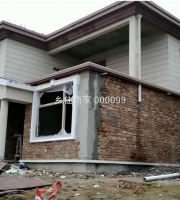Before reading this article, please click the blue font [tunnel morning bus] indicated by the arrow above, and then click “follow”, so that you can continue to receive the article for free
.
The recruitment information of national tunnel and bridge engineering is updated every day, including (tunnel excavation, support, secondary lining, pavement, greening, piling, beam erection, various special operators, drivers, and other engineering posts), trading new and old mechanical equipment, including (excavator, loader, mixer, tank truck, bulldozer, roller and other equipment)
.
You are welcome to pay attention, What’s the official account of the tunnel? Answer: when karst hazards are encountered in tunnel construction, drainage, crossing, reinforcement, removal, grouting and other measures or comprehensive treatment can be taken according to different influence of karst on tunnel and construction conditions( 1) When the tunnel passes through the karst area, it is necessary to find out the distribution scope and type of the karst cave, the complete stability degree of the rock stratum, the filling material and the underground water, so as to determine the construction method( 2) If the tunnel passes through the karst area, if the rock stratum is relatively complete and stable, the karst cave has stopped developing, there is relatively solid filling, and the underground water volume is small, the exploration hole or geophysical prospecting method can be used to verify the geological situation
.
If there is any change, it is convenient to take corresponding measures
.
If the karst cave is still developing or passing through the karst area such as the underground river water pocket, it is necessary to find out the size of underground water and the direction of water flow
.
The drainage problem in the construction must be solved first
.
Generally, the construction scheme of parallel heading can be adopted, and the advance drilling method can be used to advance the excavation
.
When there is a large amount of water gushing, flowing stone and mud, collapse and rockfall, the horizontal guide can be used as the drainage channel
.
When the main tunnel is blocked, the horizontal guide can also be used to open up the driving face in front, so as not to stop the main tunnel( 3) There are four common methods to deal with karst cave in Karst Section Tunnel, which are “leading, blocking, crossing and winding”
.
① Water diversion and drainage: when there is water flow in underground river or karst cave, it should be drained rather than blocked
.
After finding out the flow direction of the water source and its relationship with the location of the tunnel, the underground pipe, culvert, small bridge and other facilities shall be used to discharge the water, or the drainage tunnel shall be excavated to drain the water out of the tunnel, or the drainage tunnel shall be excavated to drain the water out of the tunnel
.
When the karst water flow is located at or above the top of the tunnel, the inclined diversion tunnel (or water diversion channel) should be excavated outside the appropriate distance to lower the water level below the tunnel bottom elevation before drainage
.
When parallel heading is set in tunnel, water can be led into parallel heading for discharge
.
② Plugging and filling: for the karst cave which has stopped developing, has a small span and no water, concrete, mortar rubble or dry rubble can be used for backfilling and sealing according to the intersection position with the tunnel and its filling conditions; According to the geological conditions, it is decided whether the side wall foundation needs to be deepened
.
When there is an empty cave at the top of the tunnel arch, according to the rock fragmentation degree of the cave, the top of the cave can be reinforced with anchor bolt or shotcrete mesh
.
If necessary, grouting reinforcement can be considered, and tunnel arch protection and vault backfill can be added for treatment
.
③ Crossing: when one side of the tunnel encounters a long, narrow and deep karst cave, the side wall foundation on that side can be deepened to pass through
.
When there is a large karst cave and running water at the bottom of the tunnel, masonry support wall can be built below the bottom of the tunnel to support the tunnel structure, and culvert pipe can be set inside the support wall to drain the karst cave water
.
When the side wall of the tunnel encounters a large and deep karst cave, and it is not suitable to deepen the foundation of the side wall, the arch can be built at the side wall or below the tunnel bottom
.
When there are deep and narrow karst caves in the middle and bottom of the tunnel, the foundation of both sides of the wall can be strengthened, and the abutment beam can be set according to the situation
.
④ Detour Construction: in case of time-consuming and difficult treatment of individual karst cave in karst area, detour heading can be adopted to bypass the karst cave, continue tunnel construction, and deal with the karst cave at the same time, so as to save time and speed up the construction progress
.
When the excavation is bypassed, the instability of the tunnel wall should be prevented
.
Stamp“
.



